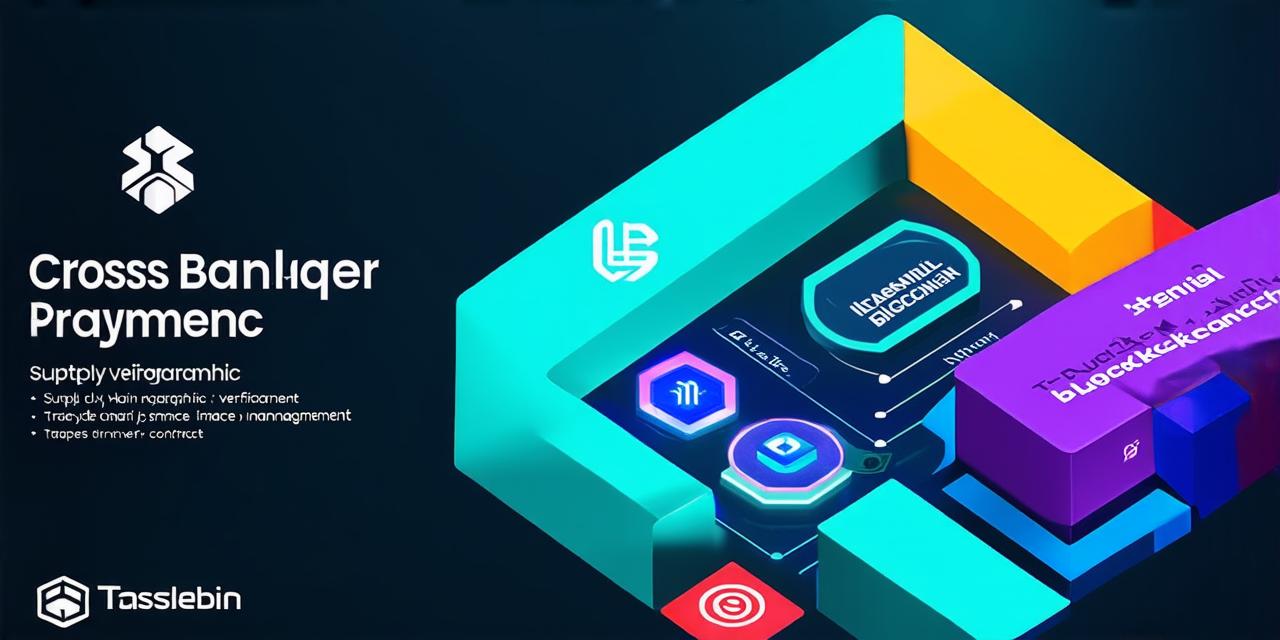Blockchain technology has been making waves in various industries, including banking. This innovative technology offers secure, transparent, and decentralized solutions that can revolutionize the banking sector. In this comprehensive guide, we will explore how blockchain is used in banking and the benefits it brings to both banks and their customers.
Table of Contents
- Introduction
- What is Blockchain?
- How is Blockchain Used in Banking?
- Cross-Border Payments
- Identity Verification
- Supply Chain Management
- Trade Finance
- Smart Contracts
- Benefits of Using Blockchain in Banking
- Increased Efficiency and Speed
- Improved Security
- Reduced Costs
- Enhanced Transparency
- Challenges and Limitations
- Future Outlook
Introduction
Blockchain technology is a digital ledger that records transactions in a secure and transparent manner. It was first introduced as the underlying technology for Bitcoin, but its potential goes far beyond cryptocurrency. In recent years, blockchain has been used in various industries, including banking. This guide will explore how blockchain is used in banking and the benefits it brings to both banks and their customers.
What is Blockchain?
Blockchain is a digital ledger that records transactions in a secure and transparent manner. It consists of blocks of data that are linked together using cryptography. Each block contains a record of multiple transactions, and once a block is added to the chain, it cannot be altered or deleted. This makes the blockchain a tamper-proof and decentralized solution for recording transactions.
How is Blockchain Used in Banking?
Blockchain technology has several applications in banking, including cross-border payments, identity verification, supply chain management, trade finance, and smart contracts. Let’s take a closer look at each of these applications.
Cross-Border Payments
One of the most significant benefits of blockchain is its ability to facilitate cross-border payments quickly and efficiently. Traditional cross-border payments can be slow and expensive, but with blockchain, transactions can be completed in a matter of seconds, regardless of the location of the parties involved. This is achieved through the use of smart contracts, which automatically execute payment terms once certain conditions are met.
Identity Verification
Identity verification is another area where blockchain technology can make a significant impact. With blockchain, personal information can be stored securely and transparently, making it easier to verify identity during transactions. This can help reduce fraud and improve customer experience by streamlining the onboarding process.
Supply Chain Management
Blockchain technology can also be used in supply chain management to improve transparency and traceability. By using a blockchain-based system, all parties involved in the supply chain can have access to real-time information about the status of goods and services. This can help reduce fraud, increase efficiency, and improve customer satisfaction.
Trade Finance
Trade finance is another area where blockchain technology can make a significant impact. With blockchain, trade documents can be stored securely and transparently, making it easier to verify the authenticity of these documents. This can help reduce fraud and improve the efficiency of trade transactions.
Smart Contracts
Smart contracts are self-executing contracts with the terms of the agreement between buyer and seller being directly written into lines of code. Once activated by the payment of a fee, the contract automatically executes when predetermined conditions are met. This can help reduce the need for intermediaries in transactions, improving efficiency and reducing costs.
Benefits of Using Blockchain in Banking
Blockchain technology offers several benefits to banks and their customers. These include increased efficiency and speed, improved security, reduced costs, and enhanced transparency.
Increased Efficiency and Speed
One of the most significant benefits of using blockchain in banking is increased efficiency and speed. Traditional banking processes can be slow and inefficient, but with blockchain, transactions can be completed quickly and securely. This can help reduce the time and costs associated with banking transactions.
Improved Security
Blockchain technology offers improved security by providing a decentralized system that is resistant to hacking and fraud. By using a blockchain-based system, banks can improve the security of their customers’ personal and financial information.
Reduced Costs
Blockchain technology can help reduce costs associated with banking transactions. By eliminating intermediaries and automating processes, banks can reduce overhead costs and pass these savings onto their customers.
Enhanced Transparency
Finally, blockchain technology offers enhanced transparency by providing a secure and tamper-proof system for recording transactions. This can help reduce fraud and improve customer trust in the banking system.
Challenges and Limitations
While blockchain technology offers several benefits to banks and their customers, it is not without its challenges and limitations. These include regulatory hurdles, technical complexity, and security concerns.
Regulatory Hurdles
One of the biggest challenges facing blockchain technology in banking is regulatory hurdles. Different countries have different regulations regarding the use of blockchain technology in banking, which can make it difficult for banks to implement these technologies on a global scale.
Technical Complexity
Another challenge facing blockchain technology in banking is technical complexity. While blockchain technology offers significant benefits, it also requires specialized knowledge and expertise to implement effectively. This can make it challenging for smaller banks to adopt this technology.
Security Concerns
Finally, security concerns are another limitation of blockchain technology in banking. While blockchain technology is secure by design, it is not immune to attacks. Banks must ensure that their blockchain-based systems are properly secured to protect against potential threats.
Future Outlook
Despite the challenges and limitations, the future outlook for blockchain technology in banking is promising. As regulatory frameworks evolve and technical expertise becomes more widely available, we can expect to see increased adoption of blockchain technology in banking. This will lead to greater efficiency, security, and transparency in banking transactions.
Conclusion
Blockchain technology has the potential to revolutionize the banking industry by offering secure, transparent, and decentralized solutions. With its ability to increase efficiency, reduce costs, and enhance transparency, blockchain technology can benefit both banks and their customers. However, regulatory hurdles, technical complexity, and security concerns must be addressed before widespread adoption can occur.

